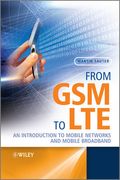 It's been interesting to read the commentary on Nokia's recent decision to abandon its own OS strategy and deliver itself into the hands of Microsoft. It might work out for Nokia or it might not but what I find quite astounding is that the discussion pretty much stops there. But what about the larger scope? After all, it's not that Nokia has replaced A for B, no, they have done much more than that.
It's been interesting to read the commentary on Nokia's recent decision to abandon its own OS strategy and deliver itself into the hands of Microsoft. It might work out for Nokia or it might not but what I find quite astounding is that the discussion pretty much stops there. But what about the larger scope? After all, it's not that Nokia has replaced A for B, no, they have done much more than that.
Last week, they were all about open source and open ecosystem, a concept that I fully embrace because I don't like to be put in a walled garden, cage, or whatever people call it. The cage might be golden but it is still a cage. I want to make my own choices and I want to decide myself what I do with a device I buy. Also, my personal data is mine, so cloud services around my personal data are also not my cup of tea.
So with Nokia turning to Microsoft, they turn away from "open" and towards "closed walled garden ecosystem". How much that will help to boost Windows Phone is up for anyone to guess at this point and I am happy for WP to succeed but I am quite unhappy that in the same instant, an "open" ecosystem goes away. That leaves the smartphone arena with at least three closed and one open operating system, a balance that I don't quite find comfortable.
Agreed, Nokia said they will keep Meego as an experimental platform which could mean anything from killing it in a month or so or keeping something in the back hand just in case their current strategy (once again) does not work out. But I think that keeping something in the back of your hand won't work with the rest of the industry working feverishly at their products.
I can live very well with niche products, I run Ubuntu on my netbook for example. But on mobiles I am not sure the same thing will work, things are just moving too quickly on mainstream mobile products for niche products with a limited amount of effort put into them to keep up for the moment.
Which will make my choice for my next mobile device rather obvious. Yes, it will be an Android device then. When I first wrote about Android it was to inflexible and too cloud oriented for me. By now I think I can customize it to my liking with a bit of effort, i.e. to work outside the Google cloud for email, calendar and contacts without making too many sacrifices. And with OperaMini now available on Android it is perhaps also possible to keep data roaming costs down as well depending on how much other chatter there is from other applications. I will report.


